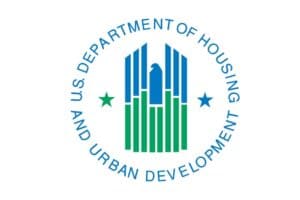Thom Amdur Author Archives

LISC Names Maurice Jones as New President and CEO
Maurice Jones, Virginia’s commerce secretary and a former HUD official, has been chosen to serve as LISC’s new president and CEO. He succeeds Michael Rubinger, who will step down after 17 years as CEO.

Conifer Realty Completes $56M Mixed-Income, Mixed-Use Development
The $56 million development consists of 176 mixed-income multifamily rental apartments, 9,000 square feet of office/retail space, and a community center. It was built using $31.9 million in federal and state tax credit equity, a $7.5 million in tax-exempt bond proceeds, as well as other loans and gap funding.

WinnDevelopment Begins Work on Massive Mixed Use Project in Rochester
WinnDevelopment and its partner broke ground on the major $100 million phase of the development that includes the construction of 96 modern luxury apartment homes on the 9th through 12th floors, retail on Main Street, office space in the mid-rise, 72 active senior living apartment homes, and a complete rehabilitation of the entire façade and windows of the building.

GAO Report on LIHTC Allocating Agencies Notes Variety of State Approaches and Potential for Problems
The Government Accountability Office’s second report on LIHTC finds that the agencies that allocate state credits generally follow program requirements. However, approaches to QAP and LIHTC award criteria vary, which opens the door to problems for some agency practices.

Speaker Ryan’s Housing-Related Reforms Focus on Residents, Not Development
The plan makes brief mention of “harnessing the abilities of non-profits and other cost-effective service providers,” but largely focuses on public housing, rental assistance, and work requirements for residents.

Obama Administration Announces 9 New Promise Zones
The Obama Administration named the final nine Promise Zones across the country. The initiative names increasing access to affordable housing as one of its key goals.
Focus on Fair Housing
Whenever I meet someone new at an NH&RA conference or industry event, I tend to ask them how they came to the affordable housing business. My unscientific poll results indicate that most of us came to the business via circuitous routes. In my own case, if not for a chance meeting at a Rosh Hashanah brunch 12 years ago with our CFO, I would almost certainly be working in healthcare policy.

Americans Want to See More Affordable Housing (Even in Their Backyards)
A nationwide public opinion poll found that more than three quarters of people (77%) support affordable housing development in their communities. 8 in 10 say their elected officials should increase efforts to support the creation of homes that are affordable to lower-wage workers.

Florida Releases Draft of 2016 QAP
The plan includes set-asides for “high priority projects,” as determined by the Board, as well as housing for individuals with disabilities.

Louisiana Hosts Forum on FY 2017 Consolidated Annual Action Plan
The Plan includes National Housing Trust Fund, Small Cities CDBG, HOME Investment Partnerships Program, Emergy Solutions Grants, and Housing Opportunities for Persons with AIDS.

New Jersey Updates Priorities After Unprecedented Demand for Tax Exempt Bonds
As of May 26, HMFA will prioritize Superstorm Sandy projects receiving Fund for the Restoration of Multifamily Housing (FRM) and/or Sandy Special Needs Housing Fund (SSNHF) funds and Non-Sandy projects that have received an HMFA commitment.

Interactive Tools Predict Impact of Housing Development, Policies
Terner Center for Housing Innovation created the Housing Development Dashboard, an interactive set of tools that aims to create a way to easily understand the interaction of land use measures and market conditions on housing production. The tools are currently in βeta testing.